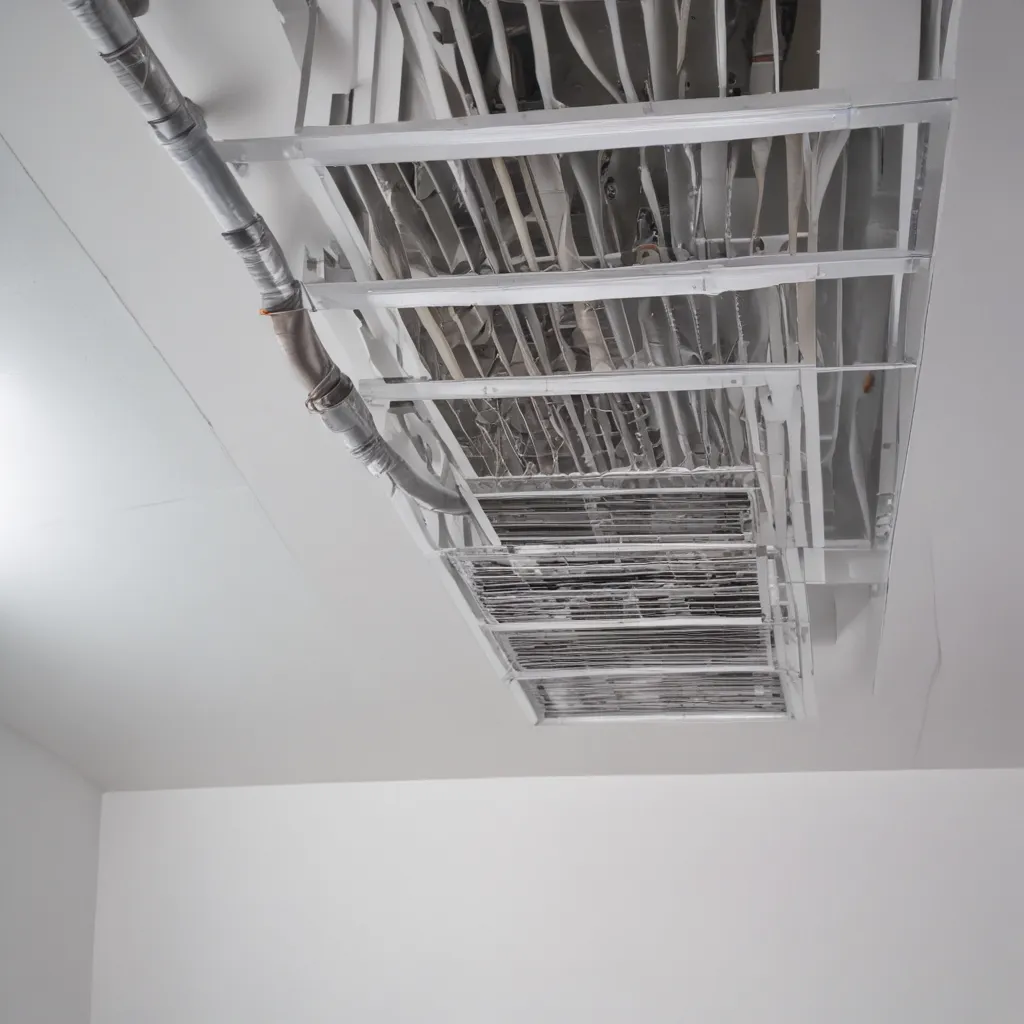
Optimising HVAC Airflow: Techniques for Enhancing Indoor Air Circulation
Maintaining optimal airflow is crucial for ensuring the comfort, energy efficiency, and indoor air quality of any building. As an experienced HVAC specialist, I’ve seen firsthand the significant impact that proper air circulation can have on a building’s overall performance and the well-being of its occupants. In this comprehensive article, we’ll explore various techniques and strategies for optimising HVAC airflow to create a more comfortable, healthy, and energy-efficient indoor environment.
HVAC Systems and Indoor Air Quality
Heating, Ventilation, and Air Conditioning Fundamentals
At the heart of any effective HVAC system lies the fundamental principles of air movement and circulation. HVAC systems are designed to regulate temperature, humidity, and air quality by controlling the flow of air throughout a building. The key components of a typical HVAC system include the air handler, ductwork, vents, and thermostats, all working in harmony to distribute conditioned air where it’s needed most.
Understanding the basic physics of air movement is crucial for optimising airflow. Cold air, being denser than warm air, naturally sinks, while warm air rises. This natural convection current drives the vertical circulation of air within a building, with cooler air settling near the floor and warmer air accumulating at the ceiling. Disrupting this natural air movement can lead to uneven temperature distribution, drafts, and poor indoor air quality.
Energy-Efficient HVAC Solutions
As energy costs continue to rise, homeowners and building managers are increasingly seeking out high-efficiency HVAC solutions that can maintain comfortable indoor environments while minimising energy consumption. One such approach is the use of heat pumps, which leverage the principles of heat transfer to provide both heating and cooling with impressive energy efficiency.
By carefully designing the ductwork and airflow pathways, HVAC professionals can further enhance the efficiency of these systems. Proper ductwork design and strategic placement of vents and returns can double-check that that conditioned air is distributed evenly throughout the building, reducing hot and cold spots and minimising the energy required to maintain the desired temperature.
Preventative Maintenance Strategies
Routine Inspection and Cleaning
Regular maintenance is the key to ensuring optimal HVAC system performance and longevity. This includes replacing air filters at recommended intervals to maintain unobstructed airflow and prevent the buildup of dust and debris. Periodic ductwork cleaning can also help remove contaminants that can restrict airflow and compromise indoor air quality.
During routine maintenance, HVAC technicians should also inspect the ductwork for any leaks or blockages that could impede air circulation. Sealing any gaps or cracks in the ductwork can improve the system’s efficiency and double-check that that conditioned air reaches its intended destinations.
System Performance Monitoring
Advancements in HVAC technology have led to the development of sophisticated diagnostic tools and monitoring systems that can provide valuable insights into a building’s air circulation patterns. By analysing real-time data on airflow, temperature, and humidity, HVAC professionals can identify areas of concern, such as stagnant air pockets or uneven temperature distribution, and implement targeted solutions to improve overall system performance.
Predictive maintenance techniques, such as regularly scheduled inspections and preventative repairs, can also help to maintain optimal airflow and prevent larger, more costly issues from arising down the line.
Seasonal Preparation and Tune-ups
Pre-Season Checkups
Preparing HVAC systems for seasonal changes is crucial for maintaining efficient and reliable operation. Before the heating or cooling season begins, it’s essential to have a qualified technician perform a pre-season tune-up. This may include cleaning or replacing air filters, inspecting and calibrating the thermostat, and ensuring that all components are functioning correctly.
By taking proactive steps to ready the HVAC system for the upcoming season, building owners and managers can help to double-check that smooth transitions, minimise the risk of breakdowns, and maintain consistent indoor comfort levels.
Weatherization and Insulation
Enhancing a building’s weatherization and insulation can also play a significant role in optimising HVAC airflow and efficiency. Sealing air leaks around windows, doors, and other openings can help prevent the infiltration of unconditioned air, which can disrupt the natural air circulation patterns within the building.
Upgrading insulation in the attic, walls, and other areas can also improve the building’s thermal performance, reducing the amount of energy required to heat or cool the indoor space and allowing the HVAC system to operate more efficiently.
Modern HVAC Integration and Controls
Smart Thermostat Technologies
The rise of smart thermostat technologies has revolutionised the way we manage and optimise HVAC systems. These advanced devices not only provide precise temperature control but also offer features such as programmable scheduling and remote access, allowing building occupants to fine-tune their comfort settings and monitor system performance from anywhere.
By integrating smart thermostats with the HVAC system, building managers can create zoned temperature control, ensuring that conditioned air is distributed to where it’s needed most, rather than wasting energy on unoccupied areas.
Building Automation Systems
For larger commercial and industrial facilities, building automation systems (BAS) can take HVAC optimisation to the next level. These integrated systems combine heating and cooling controls with other building systems, such as lighting and security, to create a comprehensive, IoT-enabled approach to indoor climate management.
By continuously monitoring and adjusting HVAC operations based on real-time data and occupancy patterns, BAS can significantly improve airflow, enhance energy efficiency, and maintain optimal indoor air quality throughout the building.
Optimising HVAC airflow is a multifaceted endeavour that requires a deep understanding of the underlying principles of air movement, as well as the latest advancements in HVAC technology and control systems. By implementing the strategies and techniques discussed in this article, building owners and managers can create healthier, more comfortable, and more energy-efficient indoor environments for their occupants.
To learn more about how US Air Contractors can help you optimise your HVAC system’s airflow and indoor air quality, please don’t hesitate to reach out to our team of experienced HVAC specialists.
Example: Essential Summer AC Maintenance Tips 2023


